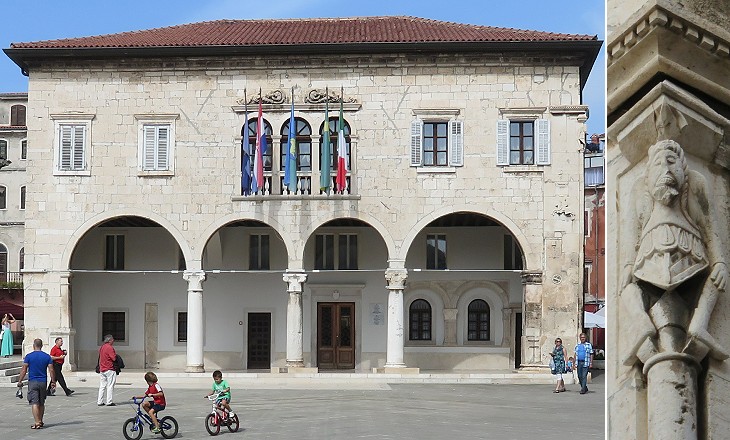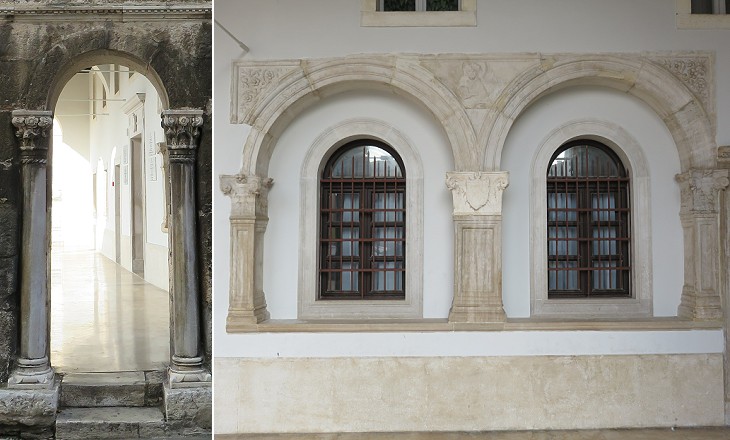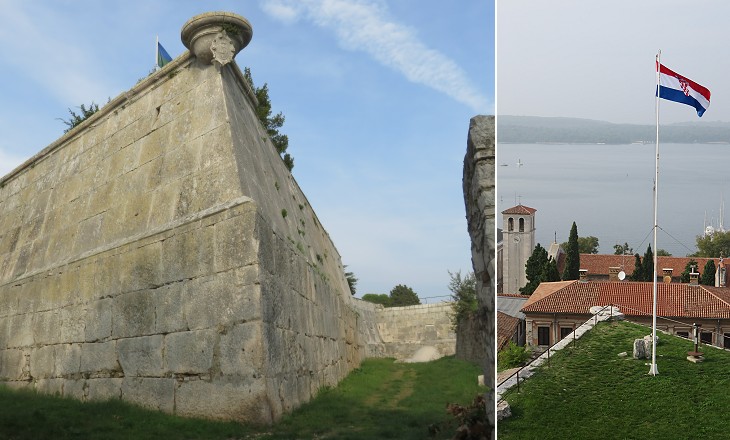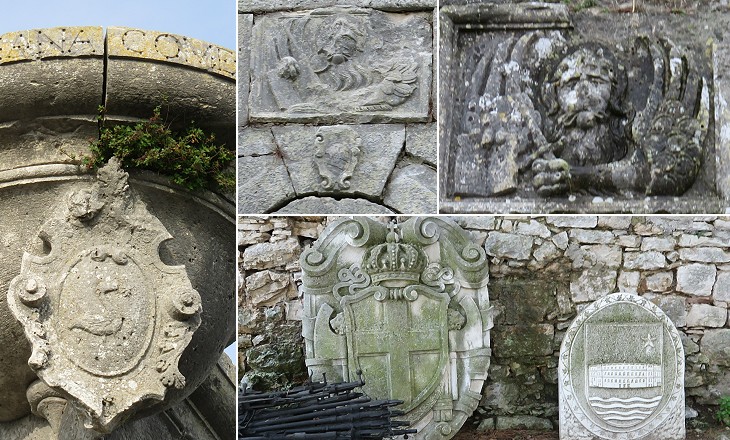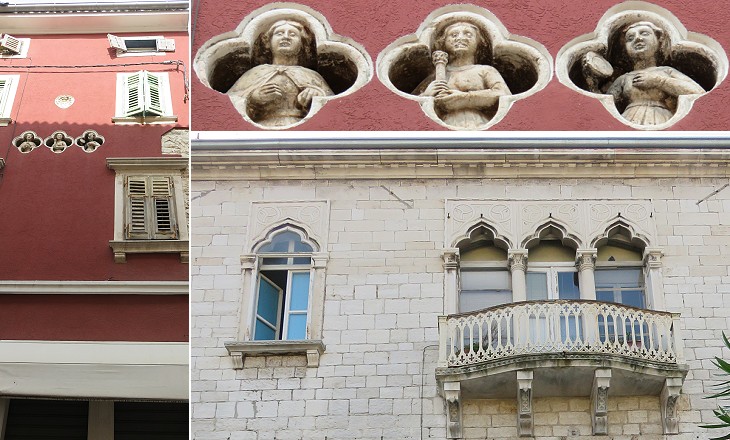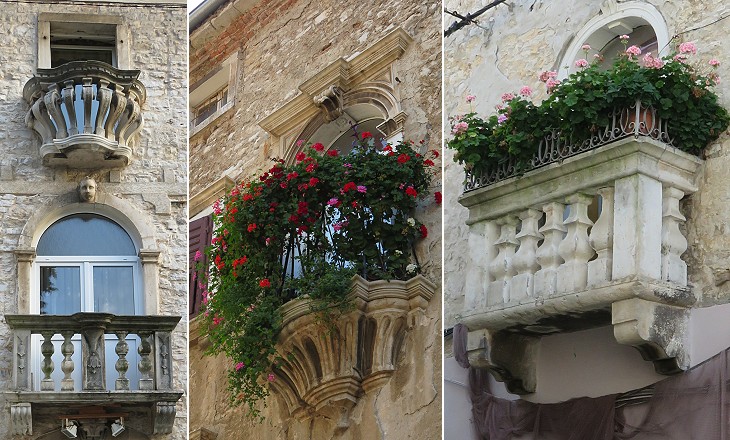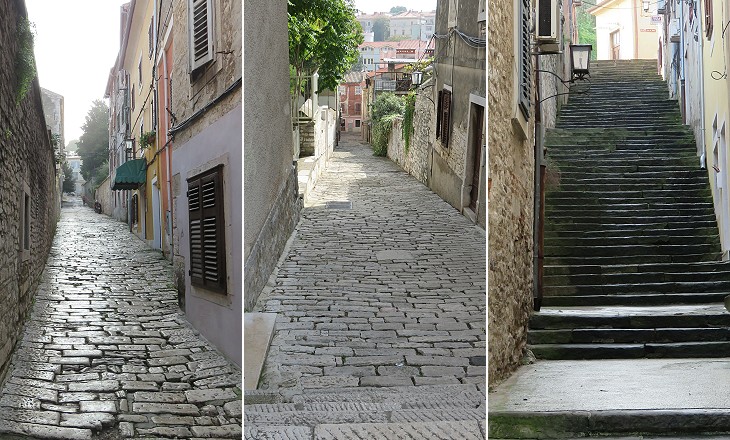  What's New! Detailed Sitemap All images © by Roberto Piperno, owner of the domain. Write to romapip@quipo.it. Text edited by Rosamie Moore. Page added in February 2015. |
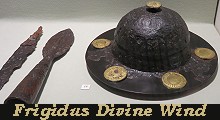 - Venetian Pola (Pula) - Other Monuments - Venetian Pola (Pula) - Other Monuments(Longobard weapons at Museo Archeologico di Cividale) You may wish to read an introduction to this section or see two pages on Roman Pola or its churches first.
After the year 1000, similar to what occurred in many other Italian towns, the citizens of Pola established local councils to implement some form of self-government (Comune di Pola). In the XIIIth century Pola was a possession of the Patriarchs of Aquileia who favoured the Castropoli, a local family pretending to descend from the Roman Sergii, who were appointed to the most important positions of the Comune di Pola. A Town Hall was built inside an ancient Temple to Diana, the remnants of which are still visible at the back of it.
In 1331 Pola became a direct possession of Venice. The Town Hall became the residence of the Venetian governors who ruled the town until 1797. In 1379, during the War of Chioggia, the Genoese sacked Pola and set fire to many of its buildings, including the Town Hall. Its northern (medieval) and western (Roman) sides were not damaged, but its front had to be rebuilt.
In 1651, at a time when Pola was very impoverished and its population very low, the front and the roof of the Town Hall collapsed. They were rebuilt in 1696-98. Finally during the XIXth century Austrian authorities redesigned the building, but retained its Venetian loggia, similar to what they had done at Spalato.
The Castropoli owed their name to Castrum Pola, a small castle they had on the hill at the centre of the town. In 1632 the Venetians built a large fortress on the site of the medieval castle. The purpose of the new fortification was not to protect the town from the Ottomans, but rather from the Spaniards (who at the time ruled over the Duchy of Milan and the Kingdom of Naples). In the frame of the Thirty Years' War, Venice supported France against Spain in a conflict related to Mantua (1627-31). In 1630 the Spanish fleet requested permission to enter the northern Adriatic Sea to accompany Maria Anna, daughter of King Philip III, to Trieste for her marriage to Ferdinand, son of Emperor Ferdinand II. The Venetian Senate denied the permission, but sent a fleet to escort Maria Anna from Ancona to Trieste. An open war was avoided, but relations between Venice and Spain were poor for some years.
The fortress was built by Antoine de Ville, a French military architect, with stones taken from ancient theatres. It was a rather large complex, but its garrison was very small, because relations with Spain improved after 1645, when Venice was involved in a long war with the Ottomans who landed on Crete. In general the Venetians built far more fortresses than they could actually man (you may wish to see a section on the Venetian fortresses in Greece).
In 1859 Pola was revitalised by the Austrian decision to develop its harbour to make it the main base of the Imperial Navy. A series of modern fortifications and other facilities were built along the coast of its bay and on some islets. The fortress at the top of the hill was only slightly modified. Today it houses a small historical museum where one can see the symbols of Fascism (a bundle of rods that are tied around an axe) and Communism (a five-pointed red star).
During the Austrian administration many buildings were modernized. One of them incorporates a previous decoration showing three of the four cardinal virtues. At the centre the woman holding a column represents Strength; she is flanked by Justice (who has lost both her sword and her balance scale) and Prudence who holds a mirror. You may wish to see a page on the Iconography of Virtues.
Small balconies are a typical feature of Venetian architecture which can be seen also at nearby Rovigno.
Return to Roman Pola or to the Churches of Medieval and Venetian Pola. Move to: Introductory page Roman Aquileia - Main Monuments Roman Aquileia - Tombs and Mosaics Early Christian Aquileia Medieval Aquileia Chioggia: Living on the Lagoon Chioggia: Churches Chioggia: Other Monuments Roman and Medieval Cividale del Friuli Venetian Cividale del Friuli Grado Palmanova Roman and Byzantine Parenzo (Porec) Medieval and Venetian Parenzo (Porec) Pomposa Roman Ravenna Ostrogothic Ravenna Byzantine Ravenna: S. Apollinare in Classe Byzantine Ravenna: S. Vitale Byzantine Ravenna: Other Monuments Medieval Ravenna Venetian and Papal Ravenna: Walls and Gates Venetian and Papal Ravenna: Churches Venetian and Papal Ravenna: Other Monuments Rovigno (Rovinj) Roman and Medieval Trieste Modern Trieste  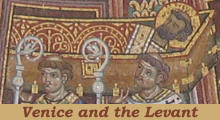  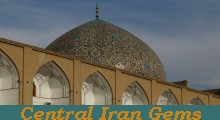 |
